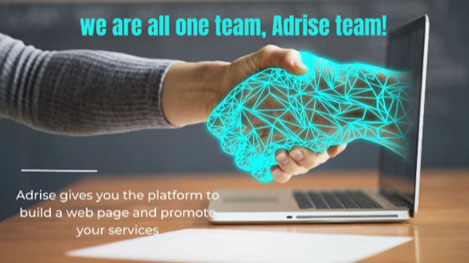Marketing & Media:
Marketing & Media services encompass a wide range of platforms and strategies aimed at promoting businesses, products, services, and ideas to target audiences. Here are the main sub-categories:
- Digital Marketing:
- Search Engine Optimization (SEO): Enhances visibility and ranking of websites in search engine results.
- Pay-Per-Click (PPC) Advertising: Uses paid advertisements on search engines and social media platforms to direct targeted traffic.
- Social Media Marketing involves engaging audiences on platforms like Facebook, Instagram, Twitter, etc., to build brand awareness and customer relationships.
- Content Marketing: Creates and disseminates valuable, relevant content to attract and retain a specific audience.
- Email Marketing: This involves email campaigns to communicate with prospects and customers, promoting products, offers, and updates.
- Analytics and Data-driven Strategies: Uses data insights to optimize marketing campaigns and improve ROI.
Benefits:
-
- Targeted Reach: Digital marketing empowers businesses to target specific demographics, behaviors, and interests effectively.
- Measurable Results: Performance metrics provide insights into campaign effectiveness, allowing for real-time adjustments.
- Cost-Effective: Often more affordable than traditional marketing methods, with options to scale budgets based on performance.
- Online Media:
- Digital Advertising: Includes banner ads, video ads, and sponsored content on websites and apps.
- Influencer Marketing: Collaborates with influencers to endorse products or services to their followers.
- Affiliate Marketing: Partners with affiliates who earn commissions for driving traffic or sales through their promotional efforts.
Benefits:
-
- Global Reach: Reaches audiences beyond geographical boundaries, leveraging the internet's global accessibility.
- Engagement: Interactive formats encourage user engagement through clicks, likes, shares, and comments.
- Targeting Capabilities: Advanced targeting options ensure messages reach the right audience segments.
- Television & Radio Stations:
- Broadcast Advertising: Airs commercials during TV and radio programs to reach mass audiences.
- Sponsorships and Promotions: Partners with stations for sponsored content, endorsements, or event promotions.
Benefits:
-
- Wide Audience: TV and radio have broad audience reach, making them practical for brand awareness campaigns.
- Local and National Exposure: Targets specific regions or nationwide audiences, depending on station coverage.
- Impactful Messaging: Combines audio-visual elements to create memorable brand experiences.
- Printed Media:
- Newspapers and Magazines: Advertisements in print publications targeting specific readerships.
- Direct Mail: Sends promotional materials like flyers, brochures, and catalogs directly to households or businesses.
- Outdoor Advertising: Includes billboards, posters, and signage placed in high-traffic locations.
Benefits:
-
- Tangible Presence: Printed materials provide physical interaction with brands, enhancing memorability.
- Targeted Distribution: Reaches niche audiences through specialized publications or geographic targeting.
- Longevity: Some print ads can have a longer shelf life than digital ones.
Marketing and media utilize digital and traditional channels to reach and engage target audiences effectively. Businesses use these diverse strategies to build brand presence, drive sales, and foster customer relationships in an increasingly competitive market. Each sub-category provides distinct advantages tailored to different marketing objectives and audience preferences, contributing to businesses' overall success and growth across various industries.
